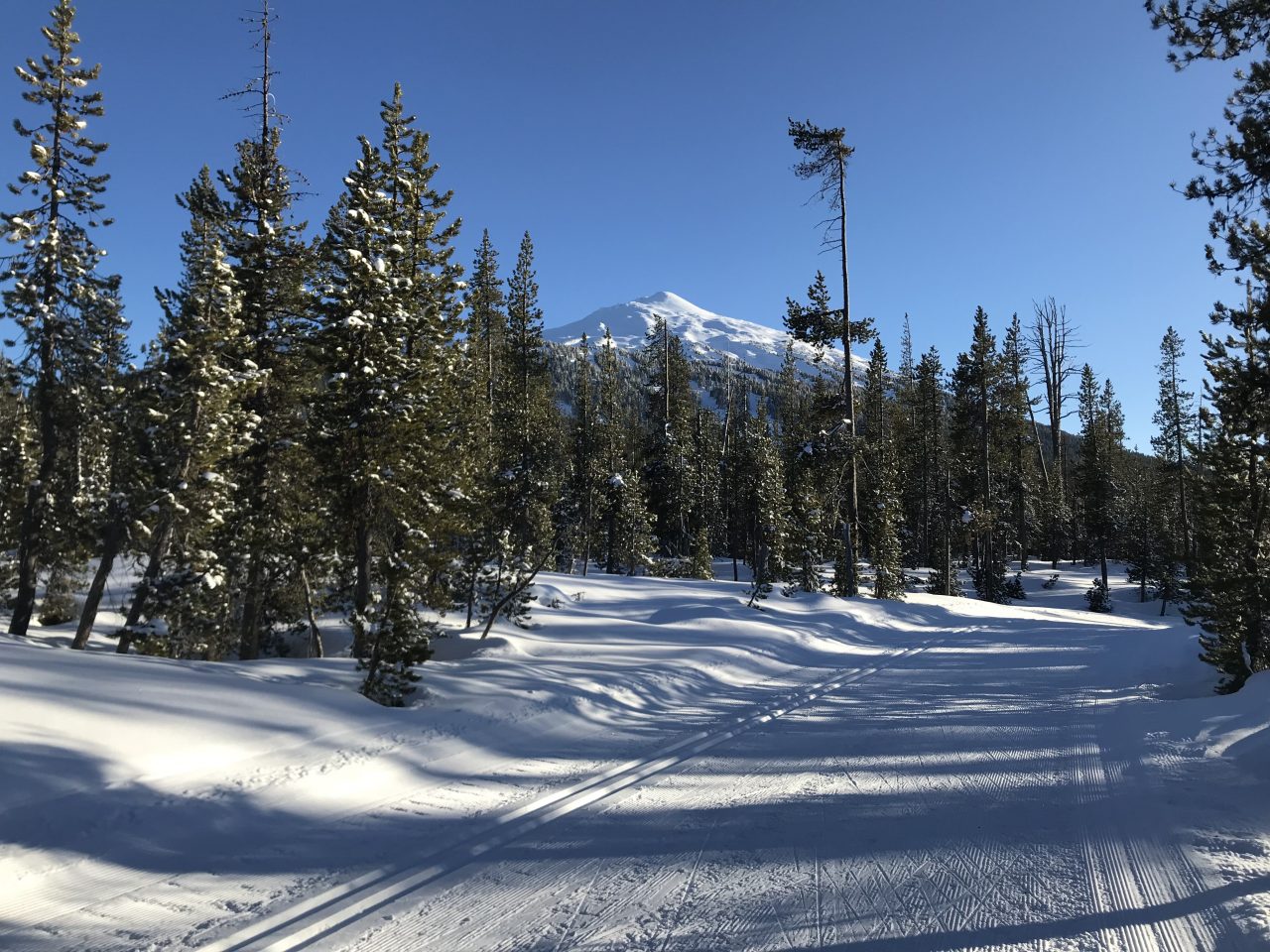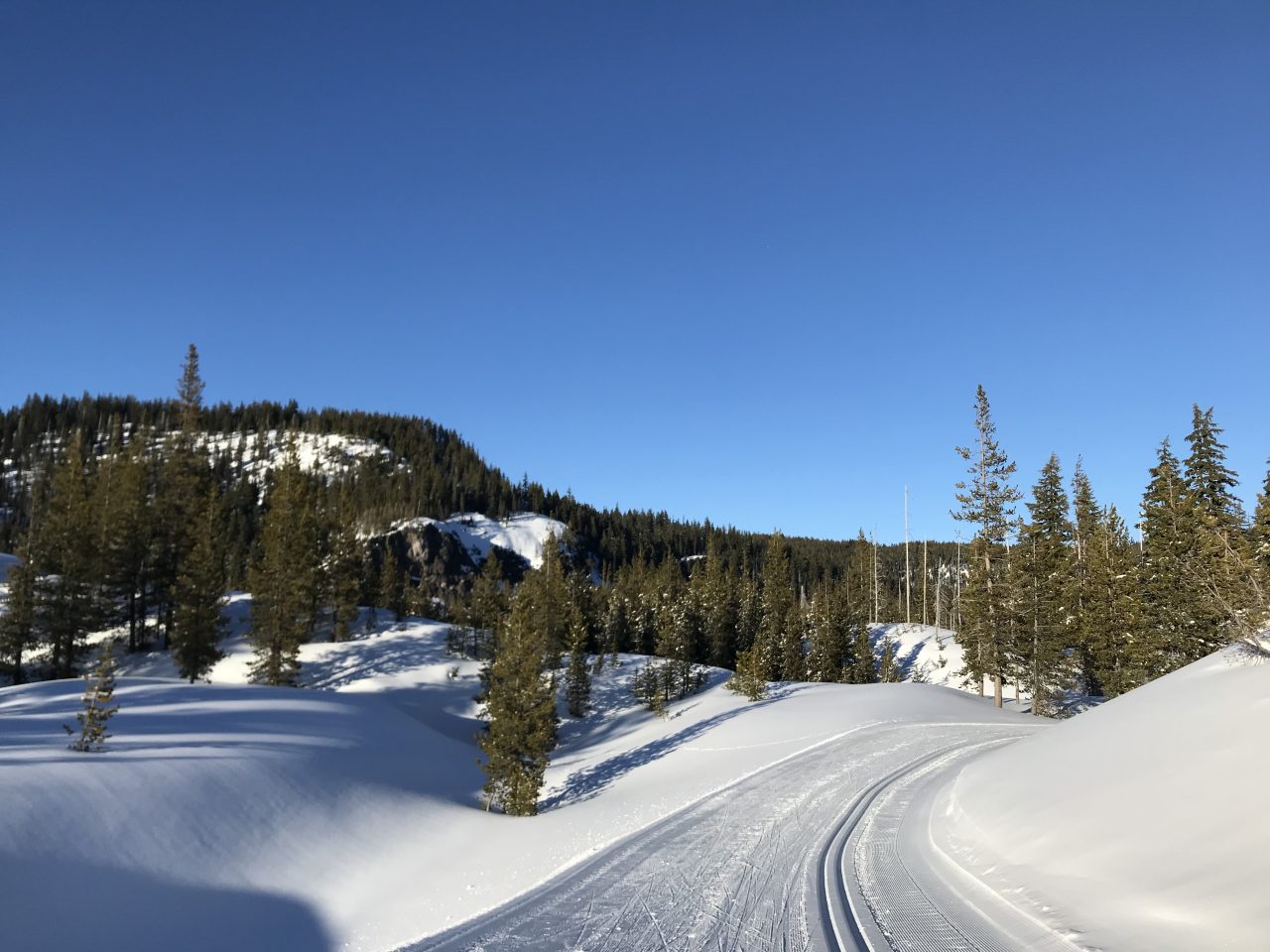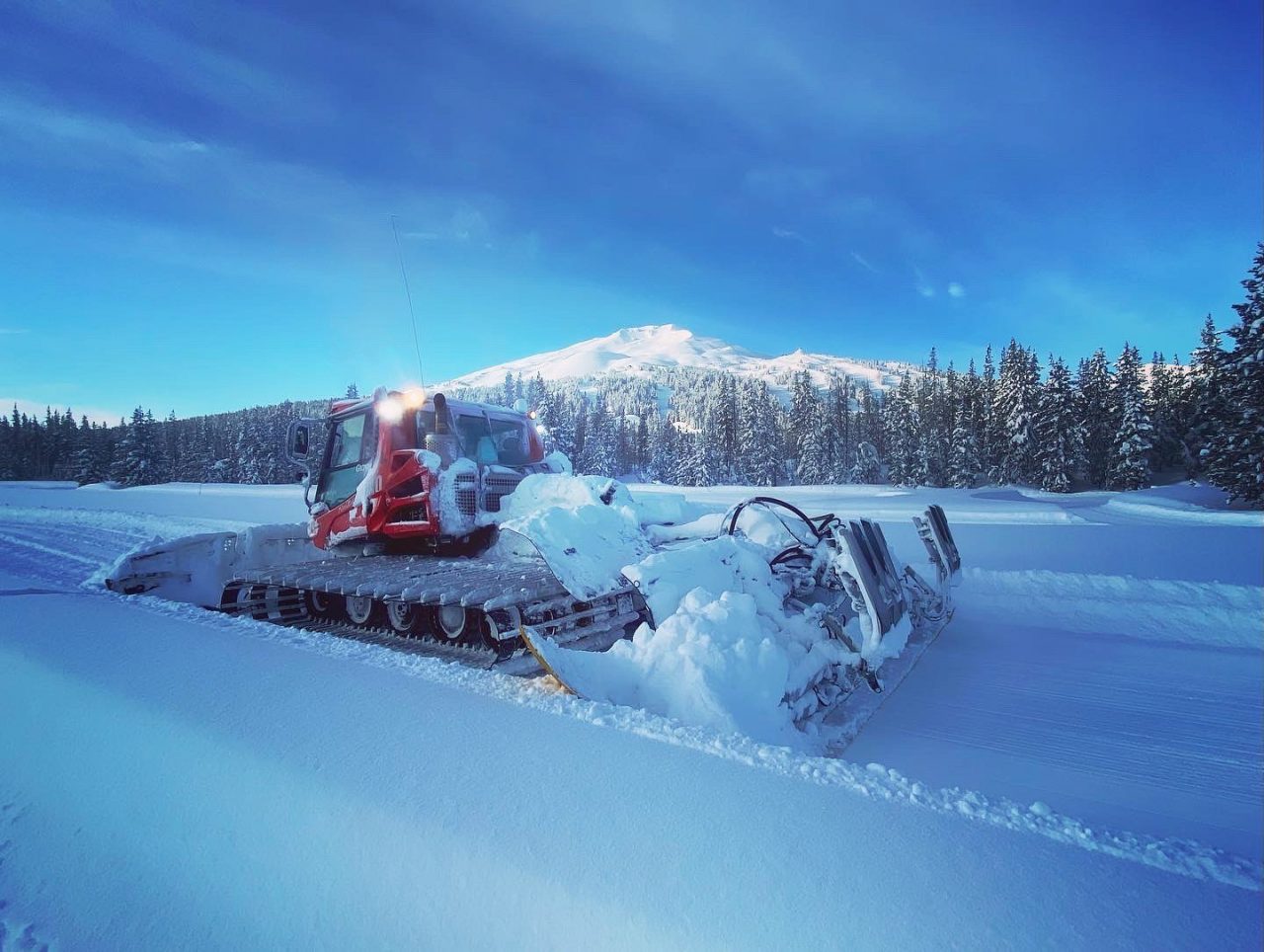If there’s ever a place for a cross-country skier to put on their bucket list, Mt. Bachelor in central Oregon is it. With a ski season that typically lasts into late May and can even extend to June—with natural snow some 6,400 feet above sea level—the Mt. Bachelor Nordic Center is spring skiers’ paradise.
According to Nordic Manager Sydney Powell, Mt. Bachelor (about 22 miles west of Bend, OR) has been inundated since January with snowstorms that brought powder conditions throughout the winter and a 10-foot snowpack (120-inch base depth) as of early March.
“The grooming team has worked long hours to keep up with it all, but we are really grateful to have this challenge given the lack of snow in some places [of the country],” Powell stated. “May 26 is our planned season-end date, so there are nearly [two] months of skiing yet to go!”
As of late March, the Nordic Center, situated on the side of North America’s sixth-largest ski center, had all 56 kilometers of groomed terrain open for classic and skate skiing.
On April 6, it will host the Cascade Crest, the last race of the Mt. Bachelor Cup Series organized by the Mt. Bachelor Ski Education Foundation (MBSEF). Powell described the 25 k course that winds throughout much of the trail system as “hilly but very scenic.” The 25 k skate race is the most popular, and the 50 k marathon tour entails two laps of that course. There’s also a 12.5 k distance and a 5 k kids’ race. All races are freestyle discipline.
To close out the official season, the Nordic Center also has a variety of fun spring activities planned, including an Easter egg hunt on March 31, “Treats on the Trails” on April 12 and May 12 (Mother’s Day), and a spring deck concert/closing weekend celebration on May 25. While not entirely nordic, the Pole Pedal Paddle, MBSEF’s signature event, is slated for May 18. The multi-sport relay includes an alpine leg, 8 k cross-country ski, 22-mile road bike, 5-mile run, 1.5-mile canoe/kayak/SUP paddle, and 0.4-mile sprint.
A dormant volcano in the Cascade Range, Mt. Bachelor tops out at 9,068 feet and regularly experiences high winds and extreme storms. This keeps the ski season extending from November through May most years and into June for teams who pay to use the trails.
“We hope to host the US Ski Team, Biathlon Team, and Para Team again this May,” Powell explained. “We offer contract grooming in June for club teams and typically get a pretty good turnout from club ski teams from the western states. We’ll offer June grooming again this season for interested teams if snow conditions allow it.”
Powell was confident most of the trail network would remain open into May. In late March, temperatures were still in the mid-20s and low-30s Fahrenheit. She expected the Nordic Center to have at least 15-20 kilometers still open at the end of the season and said they hoped to offer skiing on the remaining snow into mid-June.
That’s typically when ski teams from around the country, from club to national level, visit Mt. Bachelor to start training for next winter, even if only on a few kilometers of snow. Cross-country skiing in June is as much a novelty as it is a rarity in the U.S.
According to U.S. Ski Team Head Coach Matt Whitcomb, the 25-minute drive down to Bend, where the ski team stays during their visit, at an elevation of roughly 3,300 feet, makes for a key training and recovery combo.
“We can also go rollerskiing in the afternoon, we can go mountain biking, we can run in shorts and T-shirts,” he told FasterSkier during the team’s Mt. Bachelor training camp in May 2022. “It’s like you’re experiencing the summer and the winter on the same day for two weeks in a row.”
Mt. Bachelor is a similar distance from Sunriver, a small resort town to the south. It’s marketed as the Pacific Northwest’s largest resort playground, with everything from cross-country and downhill skiing to snowshoeing and dog sledding in the winter, plus mountain biking, cycling, trail running, paddling, concerts, and more in the summer.
“Central Oregon is an awesome spring destination,” Powell explained.
For those who have visited before, Powell said not much has changed in the last ten years since she’s worked there—which is a good thing.
“We have a nordic lodge and offer lessons for all levels every day of the week,” she said. “We also have a cafe on-site and a retail shop with rentals. We have nordic ski patrol and day grooming, so a pretty full-service nordic offering.”
For Whitcomb, it’s the trees and world-class trail system that get him.
“You’re skiing through Douglas fir—just these massive, old trees—on creative, windy, hard trails…,” he said. “It’s just such a wonderful environment. The way these cascade forests smell this time of the year when the new growth is coming up—you step out of the car when you first arrive, and it’s like, ahh. I could be blindfolded and tell you exactly where I was.”
Alex Kochon
Alex Kochon (alexkochon@gmail.com) is a former FasterSkier editor and roving reporter who never really lost touch with the nordic scene. A freelance writer, editor, and outdoor-loving mom of two, she lives in northeastern New York and enjoys adventuring in the Adirondacks. She shares her passion for sports and recreation as the co-founder of "Ride On! Mountain Bike Trail Guide" and a sales and content contributor at Curated.com. When she's not skiing or chasing her kids around, Alex assists authors as a production and marketing coordinator for iPub Global Connection.







